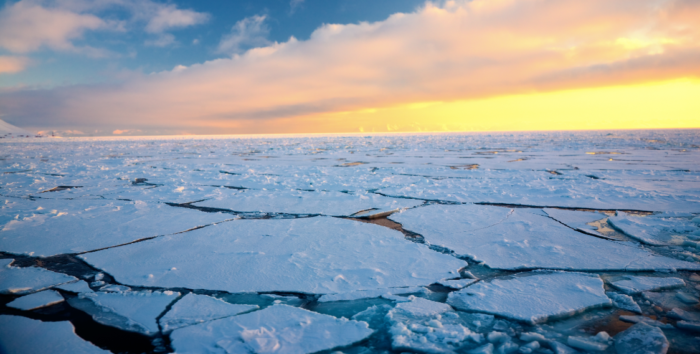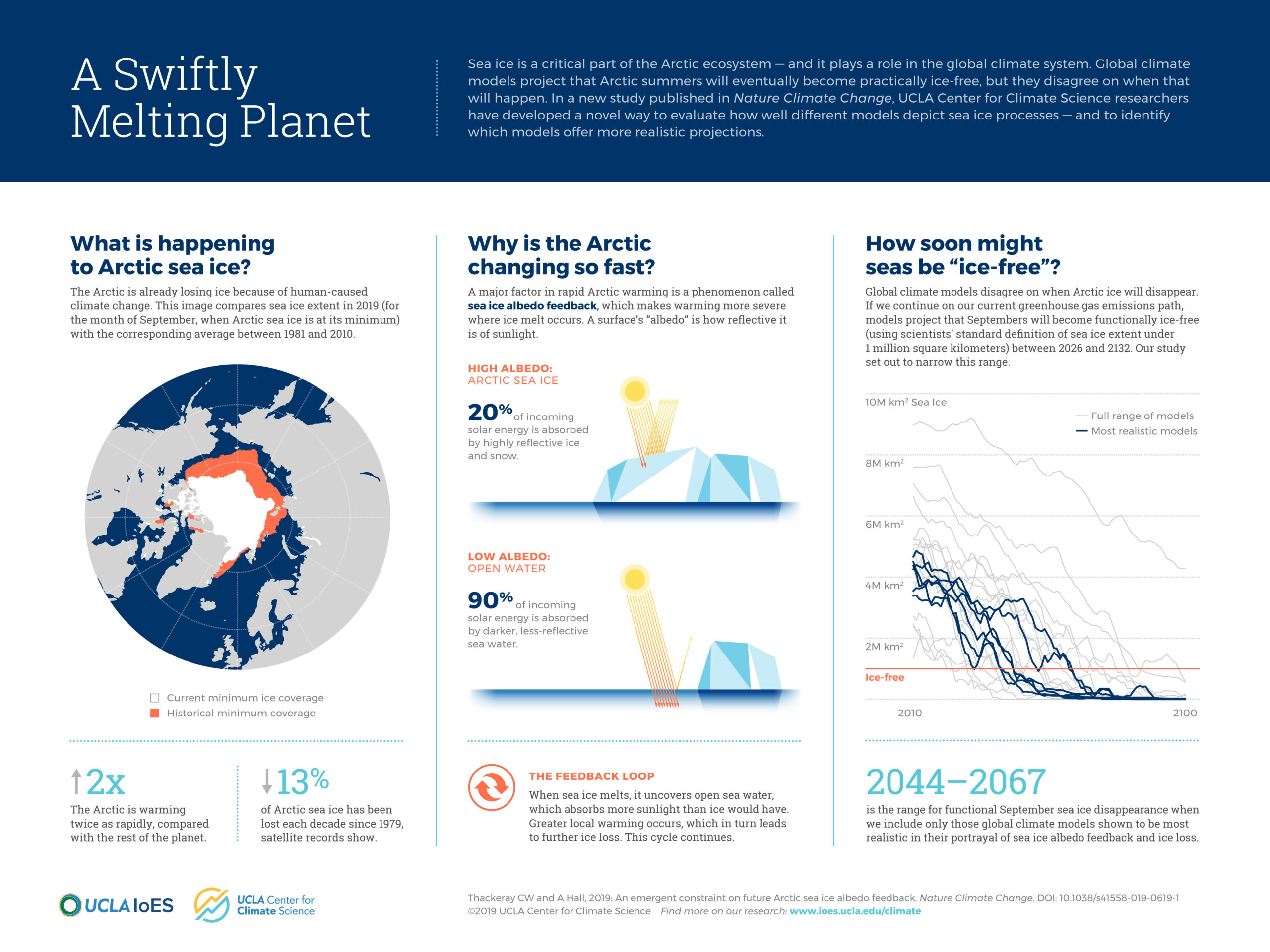Human-caused climate change is on track to make the Arctic Ocean functionally ice-free for part of each year starting sometime between 2044 and 2067, said a recent study by the US University of California (UCLA) climate scientists.
Satellite observations show that since 1979, the amount of sea ice in the Arctic in September — the month when there is the least sea ice, before water starts freezing again — has declined by 13% per decade.
Models’ predictions so far have disagreed widely. Among the current generation of models, some show ice-free Septembers as early as 2026; others suggest the phenomenon will begin as late as 2132.
The UCLA study, published in Nature Climate Change and led by Chad Thackeray, an assistant researcher at the UCLA Institute of the Environment and Sustainability’s Center for Climate Science, focuses the predictions to a 25-year period.
Thackeray notes that one reason predictions about sea ice loss diverge so much is that they differ in how they consider a process called sea ice albedo feedback, which occurs when a patch of sea ice completely melts, uncovering a seawater surface that’s darker and absorbs more sunlight than ice would have.
That change in the surface’s reflectivity of sunlight, or albedo, causes greater local warming, which in turn leads to further ice melt.
The cycle exacerbates warming — one reason the Arctic is heating up twice as fast as the rest of the globe.
For their study, Thackeray and co-author Alex Hall, a UCLA professor of atmospheric and oceanic sciences, set out to determine which models are most realistic in how they weigh the effects of sea ice albedo feedback, which they figured would lead them to the most realistic projections for sea ice loss.
Luckily — for research purposes, at least — sea ice albedo feedback not only happens over long periods of time due to climate change; it also happens every summer when sea ice melts for the season. And satellite observations over the past few decades have tracked that seasonal melt and resulting albedo feedback.
Thackeray and Hall assessed 23 models’ depiction of seasonal ice melt between 1980 and 2015 and compared them with the satellite observations.
They retained the six models that best captured the actual historical results and discarded the ones that had proven to be off base, enabling them to narrow the range of predictions for ice-free Septembers in the Arctic.
The changes to come will have broad environmental, ecological and economic implications. By reducing the uncertainty in when we’ll see those changes, we can be better prepared,
…Thackeray said.
The research is line with the goals of UCLA’s Sustainable LA Grand Challenge, an initiative that aims to transition Los Angeles County to 100 % renewable energy, 100 % locally sourced water and enhanced ecosystem health by 2050.































































